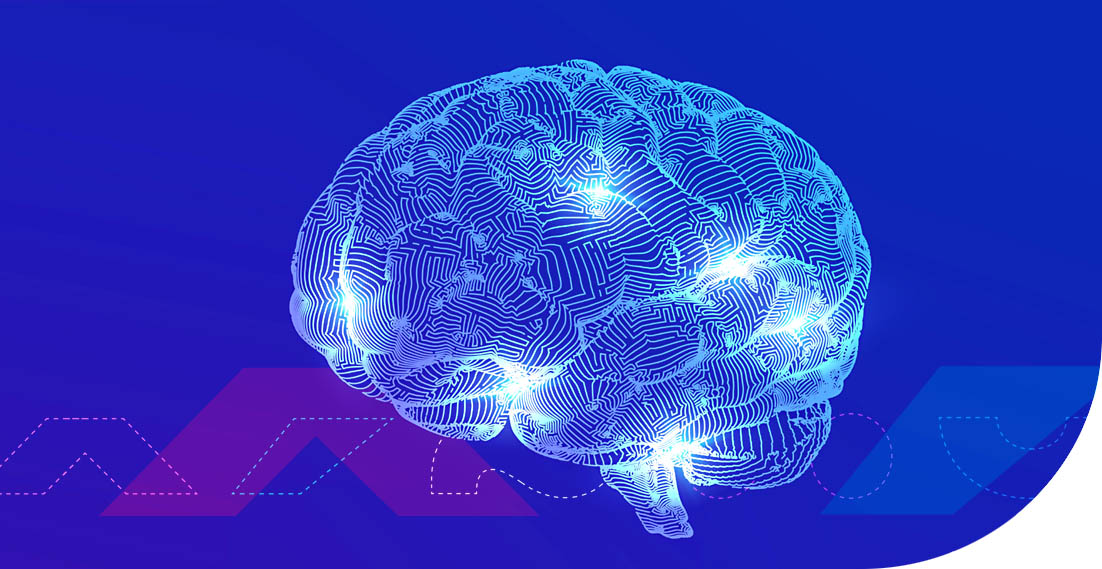How does neural machine translation (NMT) work?

Today’s technology is extremely advanced. There are many different tools and programmes to help make your work and daily activities easier. They can be used in many areas –including the translation industry. One such solution is neural machine translation (NMT). What is it and how exactly can it be used? Find out from our article.
Flawless translation for your multilingual purposes
What are neural networks?
Let’s start with explaining what a neural network actually is. It is a system whose principles of operation reflect the behaviour of the human brain, to some extent. Neural networks enable computer programmes to recognize patterns and solve common problems related to artificial intelligence, machine learning, and deep learning. Their most important feature is the ability to learn from examples and automatically summarize the acquired knowledge.
Artificial neural networks – the process of learning
Neural networks are also known as artificial neural networks (ANNs). They consist of neurons that process information with parameters (weights). These parameters are assigned to connections and are modified during the operation of the network. The learning process takes place on properly prepared data sets. On their basis, the weights of individual neurons are modified.
All this is done to keep the cost function as low as possible. The cost function tells you how flawed the neural network is. The lower the value of the cost function, the better. This means you need to define it before you start learning. In the case of training the network, specific tasks are assigned to it and appropriate data is provided on the basis of which it can “learn the desired good solutions.
What types of neural networks are there?
There are 3 types of neural networks. They depend on how the neurons of a given network are connected and on the direction of the flow of signals. Each type has its own method of selecting weights, or learning. We can list the following types:
· feedforward networks that can be divided into single-layer networks and multi-layer networks,
· recurrent networks,
· cellular networks.
The most common type of network is the feedforward network. It consists of neurons grouped into layers with one signal flow direction. Interlayer connections are possible in this network only between subsequent layers.
Multi-layer network and deep neural networks
Let’s take a closer look at multi-layer networks. Their characteristic feature is that they consist of at least one hidden layer, mediating in communication between input and output data. More specifically, a multi-layer network consists of:
1. Input layer, whose task is to get input parameters and pass them to the first hidden layer.
2. Hidden layers responsible for learning and computing.
3. The output layer where the result of the operation is obtained.
After becoming familiar with the composition of the multi-layer neural network, you can finally find out what deep neural networks are. They are mentioned when the hidden layer is made up of multiple processing layers. In the process of training such a model, a huge number of examples should be provided on the basis of which the network will create effective diagrams.
What is machine learning?
You have already learnt some details about neural networks and their types. Now, you will find out how they can learn effectively. Let’s start with machine learning. It is a subset of artificial intelligence (AI). It covers deep learning while neural networks are within its scope. Machine learning is an area devoted to algorithms that improve automatically through experience, i.e. exposure to data. So it teaches computers how to use certain data and improve with experience. It allows applications to predict the result or make a decision based on an independent analysis (without the need to program it).
Deep learning and neural networks
What does deep learning involve? This is a sub-field of machine learning, and it consists in creating neural networks, the main goal of which is to improve the techniques of voice recognition and natural language processing. Deep learning is a technique that involves multiple layers of neural networks and uses a huge amount of complex, distributed data.
The machine analyses the provided data in sequence, starting with the easiest elements. It then goes on to more complex computations and conclusions based on previous results. So the greater the amount of data analysed, the better the final results. You could say that all of this is about teaching a machine to think and act as a human would, but much more accurately and faster.
To sum up:
· large amount of data required,
· high accuracy,
· long learning time.
Neural networks – examples of typical applications
Now, let’s see how it all works in practice. What are the application examples of neural networks? Due to their versatility, they have a lot of them. The most frequently distinguished categories include:
· classifications (including: objects, text, speech, images),
· recognition (including: objects, faces),
· forecasting (e.g. time series, exchange rates),
· creating (e.g. images based on sketches),
· identification (including: specific persons on the basis of voice).
What is neural machine translation?
An interesting way to use neural network technology is for neural machine translation. It consists of automatic translation of text from one language to another. As a result, you will obtain a properly translated text, with the correct syntax and preserved context. All this is because neural machine translation uses deep learning. Therefore, it enables the machine to better understand the meaning of the content and translate the text appropriately.
Such translation is fast and effective, but still not completely perfect. Keep in mind that some machine engines can do a perfect job of translating a document, while others may be a bit worse. Still, it’s fair to say that neural machine translation is really useful.
Neural machine translation – will it replace a human translator?
Such translations are fast and effective, but still not completely perfect. Keep in mind that some machine engines can cope with the translation of documents perfectly, while others may do it a bit worse. Still, it’s fair to say that neural machine translations are really useful. They help to speed up the translation time while reducing the customer’s costs. However, remember that you may still need it to be proofread by a native speaker.
However, it is recommended to hand over the text to an actual translator after such a procedure. He/she will check if everything has been properly translated and will make the necessary adjustments. As you may have guessed, fixing some mistakes is still much faster than translating the entire text from scratch so there is only one conclusion: neural translations will not replace the translator’s work but they can only be a tool used to help.
Other articles:
Translating text from an image
Audiovisual translation – what is it?
Emoticons and emojis – images in the world of words
Flawless translation for your multilingual purposes
Marketing translation as the key to success of the fashion industry. Cooperation with a popular fashion brand
We cooperated with many customers on a daily basis. They include local companies, international enterprises and well-known brands. What are the similarities between all of them? Everyone expects high-quality translations that will help in business development. Additionally, professional translations affect their image, contribute to the opinions of recipients and are the decisive factor when it […]
Hemingway Editor and other tools for text proofing and translation
Typically, content writers first note down the message they wish to put across to their audience. Then, they re-read and edit the text. This way, they can achieve better readability, understanding and structure, and at the same time they can correct any errors in the content. It is a complex process, but fortunately there are […]
Translation of advertising slogans – how not to fall into the language trap?
Advertising translation involves the process of transferring advertising messages from one market to another. The advertising discourse is created in a language that is not only a communication tool, but also an expression of culture. This makes ad translation a highly accuracy-demanding activity. Translating slogans requires both a cultural and linguistic connection. Adapting a brand […]
Top 8 Languages for E-commerce purposes: Boosting Global Reach Through Effective Translation
Do you manage an e-shop and want to source customers abroad to increase profit? Translation will be the basis for reaching foreign recipients with your offer. You need to start speaking their local language and adjust product descriptions or service descriptions to the country where you intend to sell them. This process of adapting your […]



